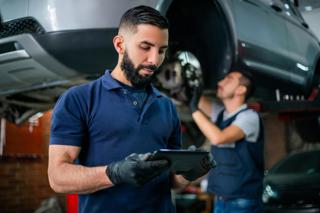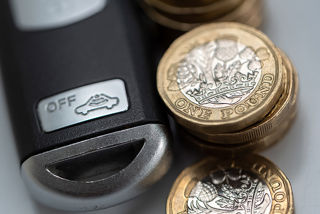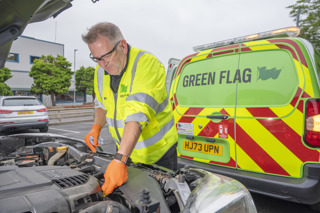Fleet operators can avoid a large number of breakdowns after the coronavirus lockdown is lifted by advising drivers of some basic car care tips.
While car usage isn’t completely banned under the lockdown rules, many vehicles will be left parked up for extended periods or only used for infrequent short journeys.
“It is highly likely that there will be a spike, particularly in battery breakdowns, once the current crisis is over. However, unlike the first working day after the New Year it is unlikely that everyone will return to work or journeys on the same day,” a spokesperson from The AA told Fleet News.
The organisation said it will be making plans to cope with any surge in demand and advising fleet drivers on vehicle maintenance.
Following the Christmas period, breakdown providers see a spike in callouts usually caused by vehicles with flat batteries.
With the end of the lockdown not currently known, and the possibility of social distancing measures being extended, some vehicles could remain unused for months.
Bryn Brooker, head of marketing at Nextbase, said: “At such an unusual and challenging time for everyone, we want to reiterate to all vehicle owners to take good care of both themselves and their vehicles.
“Ultimately, leaving your car inactive for a while means you will need to make thorough checks. This is vital to ensure the roads are safe when non-essential journeys can be made again.”
Top tips to keep you vehicle healthy during the lockdown:
Battery

The battery is the most likely cause of a breakdown. Even newer vehicles, if left for long enough, can suffer a flat battery. Cars with alarms and connected infotainment systems have a higher power draw.
Cars with a healthy battery should last at least two weeks, without needing to be started up to re-charge the battery. If there’s any doubt about the condition of the battery, fleet drivers should start the car once a week and allow it idle for 15-20 minutes.
EVs and hybrid vehicles have 12-volt batteries, the same as conventional cars. However, they charge differently. Pressing the start button, so the ready light comes on, will operate the charging system. Doing this for 10 minutes once a week should keep the 12-volt battery topped up.
EVs, Hybrid and plug-in hybrid cars should not be left with a flat drive battery either, as the battery can become damaged if left discharged for long periods of time. The ideal to to keep 50-80% charge in the battery.
Brakes

Sometimes, when a vehicle is parked up for a long period with the parking brake on, the brakes can seize. To prevent this, it's good practice to release the parking brake and move the vehicle a short distance back and forth, at the same time as running the engine. The parking brake shouldn’t be left off unless the vehicle is on private land with the wheels securely chocked.
Fuel

Before parking a vehicle up for a long period, it’s a good idea to top up with fuel. Not only will this help with other measures, but a full tank doesn't attract condensation, which could cause issues if allowed to build up over time.
Tyres

Check your tyre pressures and make sure they are at the recommended settings. A tyre that is partially deflated will put extra stress on the sidewall and may cause lasting damage if left that way for an extended period. If you have space, roll the car forward or backwards slightly to change the area where the stress on the sidewall is greatest. Keeping the pressure right will mean you are ready to go as soon as restrictions are lifted.
Paint

Cars and vans should still be washed regularly when not being used to protect the paint and trim from contaminants. Bird droppings, if left, could cause damage to the paint finish that can’t be removed with normal cleaning/polishing. Alloy wheels should also be cleaned of brake dust as this can cause pitting and staining, especially on wheels with a polished finish.
Ensure there is not food or drink left in the vehicle in an unsealed container and leaving the windows or doors open regularly to ventilate the car will prevent mould from forming inside.
DPF

Modern diesel cars are fitted with a diesel particulate filter to help reduce the exhaust emissions. These devices function by storing the harmful pollution then burning it off when the exhaust system gets hot enough – usually on a motorway.
If a vehicle is only used for short trips, such as shopping locally, the filter may become clogged. If the vehicle needs to perform a ‘regeneration’, where it clears the filter itself, a warning light will come on the instrument cluster, shaped like a filter. The engine must not be switched off while this light is illuminated. If unsure, check your handbook.





















Login to comment
Comments
No comments have been made yet.